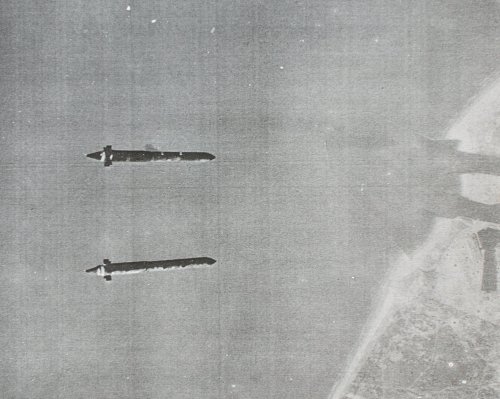J
jeffryfontaine
Guest
Not a lot is known about this weapon other than it was similar in function to the Durandal which is slowed down after release from the aircrft by parachute until a rocket motor fires and the weapon is propelled towards the target at high speed to penetrate and then explode. While Durandal was designed as an anti-runway weapon to attack airfields, the Disney bomb was designed to attack targets that were covered by reinforced concrete with the intention of destroying what was inside. The weapon weighed in at over 4000 pounds and was carried externally on the B-17 mounted to an underwing bomb rack between the inboard engine and fuselage.
Does anyone have an image or drawing of this weapon? The only image I have ever seen was of one weapon on the ground surrounded by people and only a small portion of the weapon was in view. On-line searches have produced nothing substantial so far.
Does anyone have an image or drawing of this weapon? The only image I have ever seen was of one weapon on the ground surrounded by people and only a small portion of the weapon was in view. On-line searches have produced nothing substantial so far.




